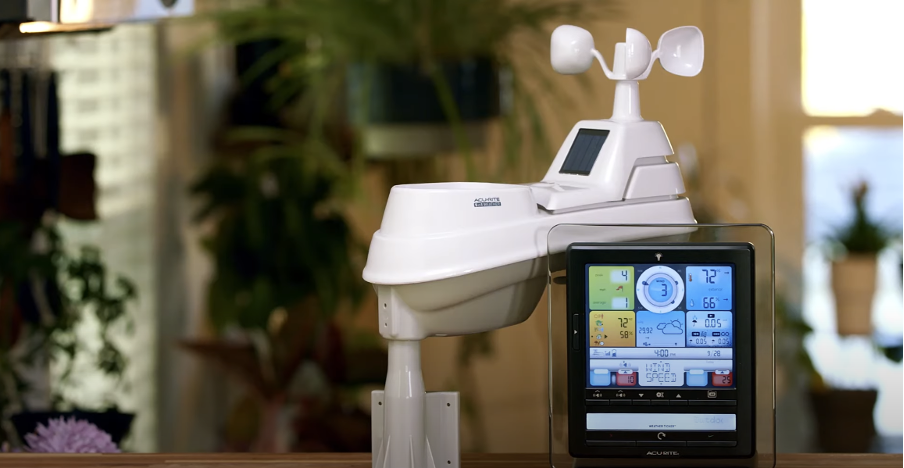Weather stations have become essential tools for individuals and organizations alike to monitor and predict weather conditions accurately. Acurite and La Crosse are two prominent brands known for manufacturing reliable and feature-rich weather stations. In this article, we will compare Acurite and La Crosse across various aspects, including accuracy, features, ease of use, pricing, connectivity options, and additional accessories. By the end, you will have a comprehensive understanding of which brand suits your needs and preferences.
Accuracy
When it comes to weather stations, accuracy is paramount. Both Acurite and La Crosse have built a reputation for providing precise weather data. However, Acurite is often regarded as the frontrunner in terms of accuracy. Acurite’s weather sensors are known for their exceptional precision, enabling users to trust the forecast and make informed decisions.
On the other hand, La Crosse weather stations are also highly accurate, with the majority of users reporting reliable weather data. However, some users have reported minor discrepancies in certain conditions, although these variations are typically within an acceptable range and do not significantly impact the overall accuracy of the weather data.
Features
Acurite and La Crosse offer a wide range of features to meet different users’ requirements. Let’s explore the notable features of each brand:
Acurite
- Multiple sensor options: Acurite provides various sensor options such as temperature, humidity, wind speed, rainfall, and more. Users can customize their weather station by selecting the sensors they need;
- Internet connectivity: Some Acurite models come with Wi-Fi connectivity, allowing users to access their weather data remotely through smartphones or computers;
- Historical data: Acurite weather stations often come with the ability to store and analyze historical weather data, enabling users to track trends over time;
- Weather alerts: Acurite offers customizable weather alerts, notifying users of specific weather conditions like high winds or heavy rainfall.
La Crosse
- Wireless transmission: La Crosse weather stations feature wireless transmission of data between sensors and the main unit, eliminating the need for complex wiring installations;
- Moon phase and sunrise/sunset times: Many La Crosse models include moon phase and sunrise/sunset time displays, which can be useful for astronomy enthusiasts or farmers.
- Forecasting: La Crosse weather stations often provide local weather forecasts, helping users plan their activities accordingly;
- Multiple display options: La Crosse offers weather stations with different display sizes and layouts, allowing users to choose the one that suits their preferences and space availability.
Connectivity Options
Both Acurite and La Crosse offer connectivity options to enhance the user experience and enable remote access to weather data. Let’s explore the connectivity options provided by each brand:
Acurite
- Wi-Fi connectivity: Certain Acurite models come with built-in Wi-Fi connectivity, allowing users to access their weather data remotely through smartphones or computers;
- Mobile app integration: Acurite provides a mobile app that syncs with compatible weather stations, providing users with convenient access to their weather data on the go.
La Crosse
- Internet bridge: Some La Crosse models require an internet bridge to enable remote access to weather data. The bridge connects the weather station to the internet, allowing users to monitor their weather data from anywhere;
- Mobile app integration: La Crosse offers a mobile app that allows users to access their weather data and receive notifications on their smartphones.
Additional Accessories
Both Acurite and La Crosse offer additional accessories that can enhance the functionality of their weather stations. Let’s explore some of the popular accessories provided by each brand:
Acurite
- Lightning detector: Acurite offers a lightning detector accessory that can be added to compatible weather stations. It provides real-time lightning detection and alerts users to potential lightning strikes in their area;
- Soil moisture sensor: Acurite provides a soil moisture sensor that measures the moisture content in the soil, helping users determine when to water their plants or crops;
- Solar radiation sensor: Acurite offers a solar radiation sensor that measures the amount of solar energy reaching the ground. It can be useful for solar panel installations or agricultural purposes.
La Crosse
- Wind extension kit: La Crosse offers a wind extension kit that includes an anemometer and wind vane. This kit can be added to compatible weather stations to enhance wind speed and direction measurements;
- Rain gauge heater: La Crosse provides a rain gauge heater accessory that prevents freezing and ensures accurate rainfall measurements in cold climates;
- Remote temperature and humidity sensors: La Crosse offers remote temperature and humidity sensors that can be placed in different areas to monitor conditions in multiple locations.
Ease of Use
Both Acurite and La Crosse strive to make their weather stations user-friendly, ensuring that even beginners can operate them effortlessly. Let’s examine the ease of use of each brand:
Acurite
- Intuitive interfaces: Acurite weather stations are known for their intuitive interfaces, making it easy for users to navigate through menus and access the desired information;
- Clear displays: The displays on Acurite weather stations provide clear and legible readings, ensuring users can easily interpret the weather data;
- Straightforward setup: Acurite weather stations come with a straightforward setup process, and the accompanying user manuals provide comprehensive guidance, making it easy for users to get started.
La Crosse
- User-friendly interfaces: La Crosse weather stations offer well-designed interfaces with simple controls, ensuring users can easily access the weather data and customize settings as needed;
- Detailed user manuals: The user manuals provided with La Crosse weather stations offer step-by-step instructions for setup and operation, helping users navigate through the features and functions effortlessly;
- Simple installation: The wireless transmission feature in La Crosse weather stations simplifies the installation process, eliminating the need for complex wiring.
Pricing
When comparing Acurite and La Crosse weather stations, pricing is an essential factor to consider. Let’s explore the pricing ranges of each brand:
Acurite
- Acurite offers a wide range of models with varying features and price points, catering to different budget requirements;
- The prices of Acurite weather stations typically range from $50 to $300, depending on the model and included features.
La Crosse
- La Crosse weather stations are also available in different price ranges, with prices typically falling between $60 and $400;
- The cost varies based on the model’s features, display size, and sensor options.
Conclusion
Both Acurite and La Crosse offer reliable weather stations with accurate forecasting capabilities. Acurite stands out for its exceptional accuracy, customizable sensor options, and intuitive interfaces. La Crosse provides a wide range of features, including wireless transmission, moon phase displays, and local weather forecasts. The choice between Acurite and La Crosse ultimately depends on your specific needs, budget, and preferences. It’s recommended to carefully review the features, connectivity options, additional accessories, ease of use, and pricing of different models before making a purchase decision to ensure it aligns with your requirements.
FAQs
Yes, both brands offer weather stations that can be used both indoors and outdoors. However, it’s important to check the specific model’s specifications to ensure it meets your intended usage requirements.
Yes, certain models of both brands offer internet connectivity options such as Wi-Fi or Bluetooth, allowing users to access their weather data remotely through computers or smartphones.
Yes, both brands offer sensor expansion options, allowing users to add additional sensors based on their needs. It’s recommended to check the compatibility and availability of sensor options for specific models.
The calibration frequency may vary depending on the specific model and environmental conditions. However, it is generally recommended to calibrate the sensors annually or as per the manufacturer’s guidelines.


